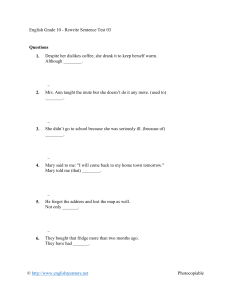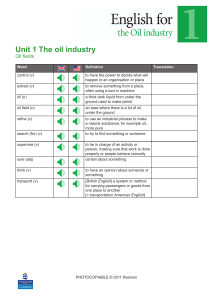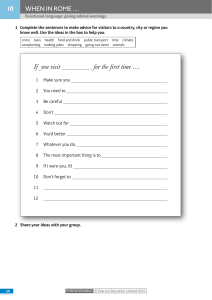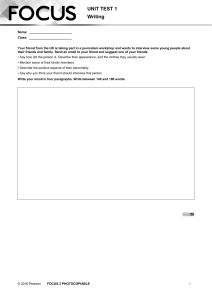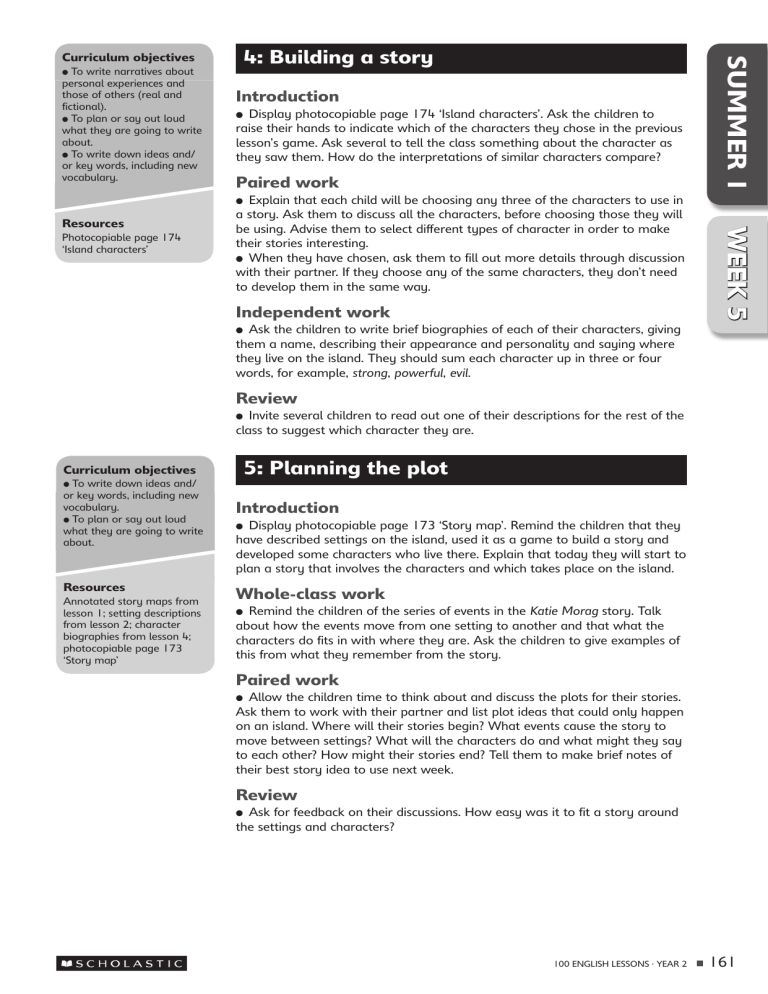
• To write narratives about personal experiences and those of others (real and fictional). • To plan or say out loud what they are going to write about. • To write down ideas and/ or key words, including new vocabulary. 4: Building a story SUMMER 1 Curriculum objectives Introduction Display photocopiable page 174 ‘Island characters’. Ask the children to raise their hands to indicate which of the characters they chose in the previous lesson’s game. Ask several to tell the class something about the character as they saw them. How do the interpretations of similar characters compare? ●● Paired work Explain that each child will be choosing any three of the characters to use in a story. Ask them to discuss all the characters, before choosing those they will be using. Advise them to select different types of character in order to make their stories interesting. ●● When they have chosen, ask them to fill out more details through discussion with their partner. If they choose any of the same characters, they don’t need to develop them in the same way. ●● Photocopiable page 174 ‘Island characters’ WEEK 5 Resources Independent work Ask the children to write brief biographies of each of their characters, giving them a name, describing their appearance and personality and saying where they live on the island. They should sum each character up in three or four words, for example, strong, powerful, evil. ●● Review Invite several children to read out one of their descriptions for the rest of the class to suggest which character they are. ●● Curriculum objectives • To write down ideas and/ or key words, including new vocabulary. • To plan or say out loud what they are going to write about. Resources Annotated story maps from lesson 1; setting descriptions from lesson 2; character biographies from lesson 4; photocopiable page 173 ‘Story map’ 5: Planning the plot Introduction Display photocopiable page 173 ‘Story map’. Remind the children that they have described settings on the island, used it as a game to build a story and developed some characters who live there. Explain that today they will start to plan a story that involves the characters and which takes place on the island. ●● Whole-class work Remind the children of the series of events in the Katie Morag story. Talk about how the events move from one setting to another and that what the characters do fits in with where they are. Ask the children to give examples of this from what they remember from the story. ●● Paired work Allow the children time to think about and discuss the plots for their stories. Ask them to work with their partner and list plot ideas that could only happen on an island. Where will their stories begin? What events cause the story to move between settings? What will the characters do and what might they say to each other? How might their stories end? Tell them to make brief notes of their best story idea to use next week. ●● Review Ask for feedback on their discussions. How easy was it to fit a story around the settings and characters? ●● 100 ENGLISH LESSONS . YEAR 2 . 161

